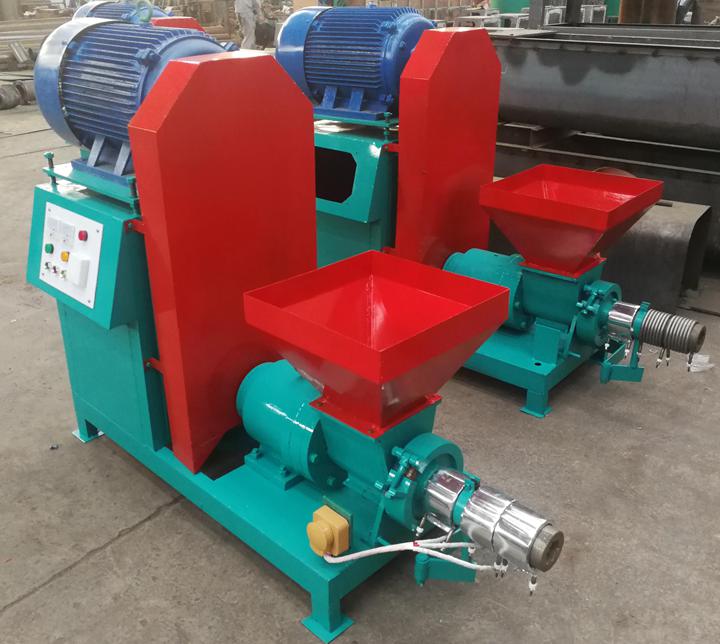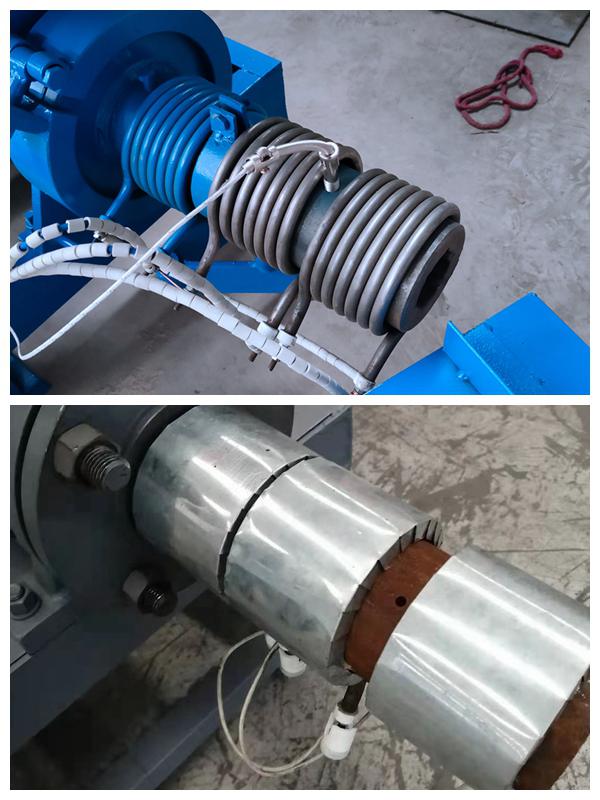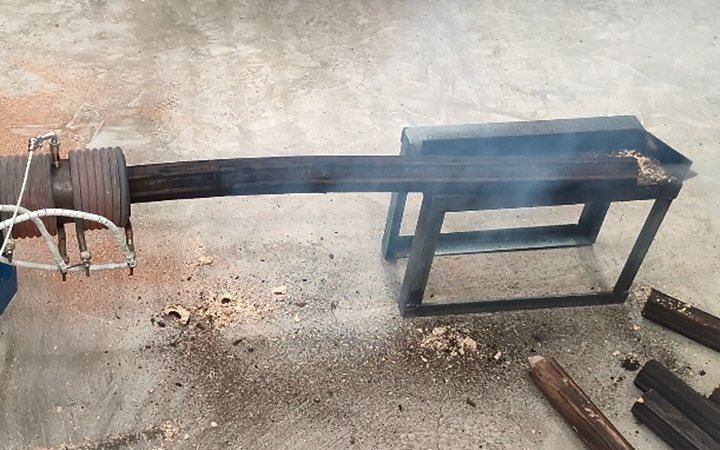톱밥 숯 기계 흐름 장비의 작업 과정에서, 우리는 자격을 갖춘 브리켓 숯을 생산하기 위해 장비의 작동 기술을 숙지해야 합니다. 작동의 핵심은 숯을 만들 때 온도를 제어하는 것입니다. 현재 숯 기계 조립 라인 장비는 온도 제어 계기 및 기타 부속품이 장착되어 있으며, 우리는 각 단계의 원자재에 필요한 온도가 다르기 때문에 각 단계의 온도 요구 사항을 이해해야 합니다. 그리고 서로 다른 온도에서 생산된 브리켓 숯의 제조 결과도 달라질 것입니다. 아래에서는 브리켓 기계의 생산 과정 각 단계의 온도 요구 사항에 대해 이야기할 것이므로, 운영 중에 이를 더 잘 제어할 수 있도록 하겠습니다.

숯 브리켓 기계의 히팅 링의 중요성

가열 링은 숯 브리켓 기계에서 더 중요한 액세서리 중 하나이며, 그 기능은 과소평가되어서는 안 됩니다. 가열 링은 슬리브의 외부에 설치되며, 그 기능은 나무 조각을 가열하는 가열 장치로, 가열 링의 고온 및 고압에 의해 나무 조각이 형성됩니다.
히팅 코일의 작동 원리는 저항선을 사용하여 열을 발생시키는 것으로, 전력 소비가 낮고 열 에너지가 집중되는 시간이 있습니다. 홀딩 링의 외부 재질은 스테인리스 스틸이며, 내부는 고저항 저항기로 되어 있습니다. 히팅 링의 저항은 2KW로, 즉시 열을 발생시켜 높은 온도에 도달할 수 있습니다.
소형 숯 기계 장비 세트는 세 개의 히팅 링으로 장착되어 있습니다. 히팅 링의 전력은 브리켓팅 과정의 속도를 결정합니다. 현재 일반적으로 6KW 히팅 링 3세트가 사용됩니다. 전력이 더 높으면 히팅 코일의 수명이 줄어들고, 전력이 더 낮으면 막대의 속도와 효율이 따라가지 못합니다.
브리켓팅 과정의 각 단계에서의 온도 요구 사항
1. 원료의 건조 단계: 원료의 수분 함량이 높은 경우를 노출 건조장에서 1~2일 두어 표면 수분이 증발하게 하여 건조 시간과 연료 소모를 줄일 수 있습니다. 그다음 입자 크기가 적합한 원료를 열풍 건조기에 넣고 건조하여 수분 함량이 10% 미만인 원료를 건조합니다. 건조 온도는 일반적으로 약 140 ℃ ~ 300 ℃입니다.
2. 원료의 성형 단계: 원료의 타출은 기계에서 완료됩니다. 성형 슬리브 외부에 가열 링이 있어 성형 슬리브의 온도를 약 350°C까지 올릴 수 있습니다. 표면이 매끄럽고 빽빽하며 균열이 없도록 하기 위해 원료의 종류와 수분 함량에 따라 적절한 성형 온도를 선택할 수 있습니다. 그 높이는 현장 시험 후에만 결정됩니다. 일반적으로 나사 프로펠러가 자격을 갖춘 것으로 가정하고 원료의 수분 함량이 6-10% 사이이며 건조 온도는 모양과 히터 모델에 따라 달라지며 일반적으로 140 ℃에서 500 ℃ 사이; 온도: 건조 파이프의 길이와 공기량 분포를 조절하여 재료의 온도를 제어하며 일반적으로 5℃~7℃를 넘지 않습니다.

3. 원료의 탄화 단계: 점화에서 탄화로는 연료봉이 점차 가열되며 화로의 온도가 160도에 도달할 때까지 가열됩니다. 이때 연료봉에 포함된 수분은 증발하지만 연료봉의 화학 조성은 변하지 않습니다. 탄화의 두 번째 단계는 점차적으로 160도에서 280도로 상승합니다. 이 온도는 일반적으로 연료봉 자체 연료에서 발생하는 열입니다. 나무가 변하기 시작합니다. 온도가 300도에서 650도까지 상승하면 숯봉은 버려지고 분해되며 숯은 고온에서 숯으로 변합니다. 이 세 단계에서 우리는 과열 등 현상을 방지하기 위해 온도를 관리해야 합니다. 온도를 800°C에서 1000°C로 계속 가열하면 탄소의 흑연 구조가 증가하고 전도성도 증가합니다. 이때 생산된 탄소봉은 고품질의 탄소봉입니다.
